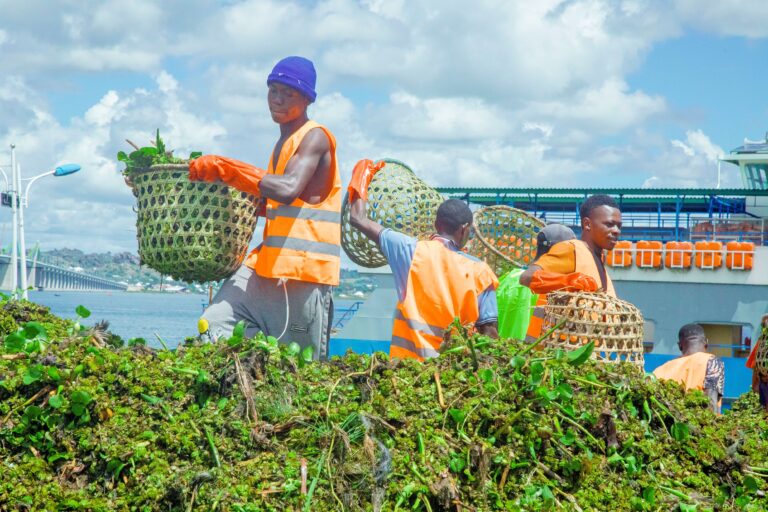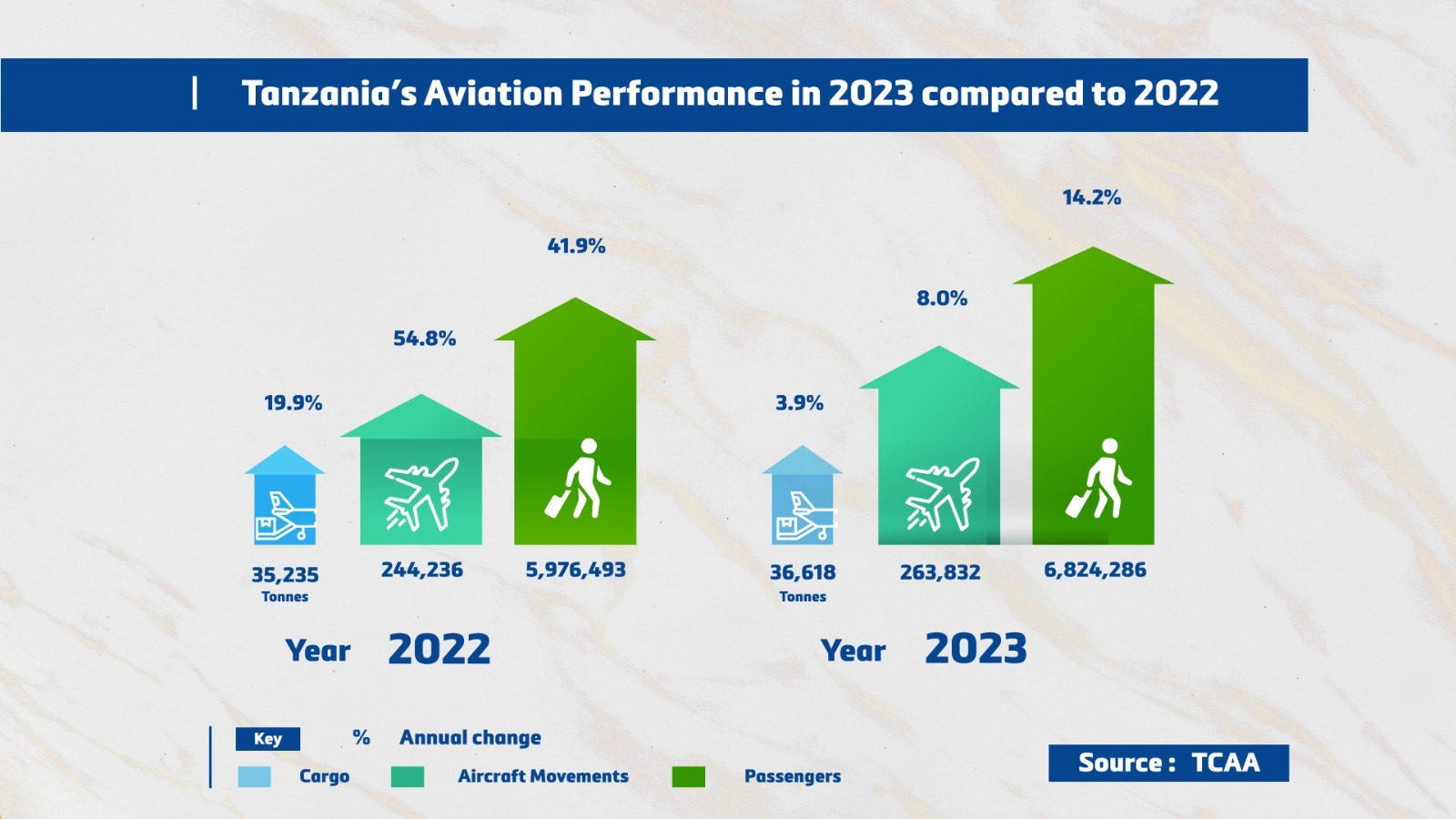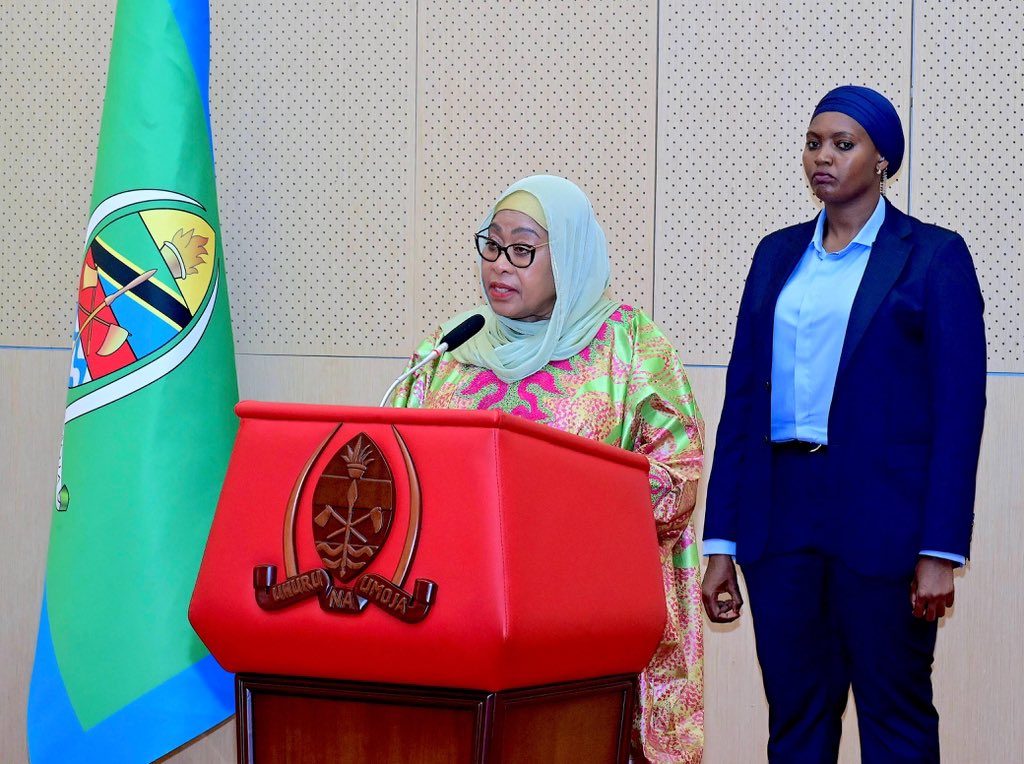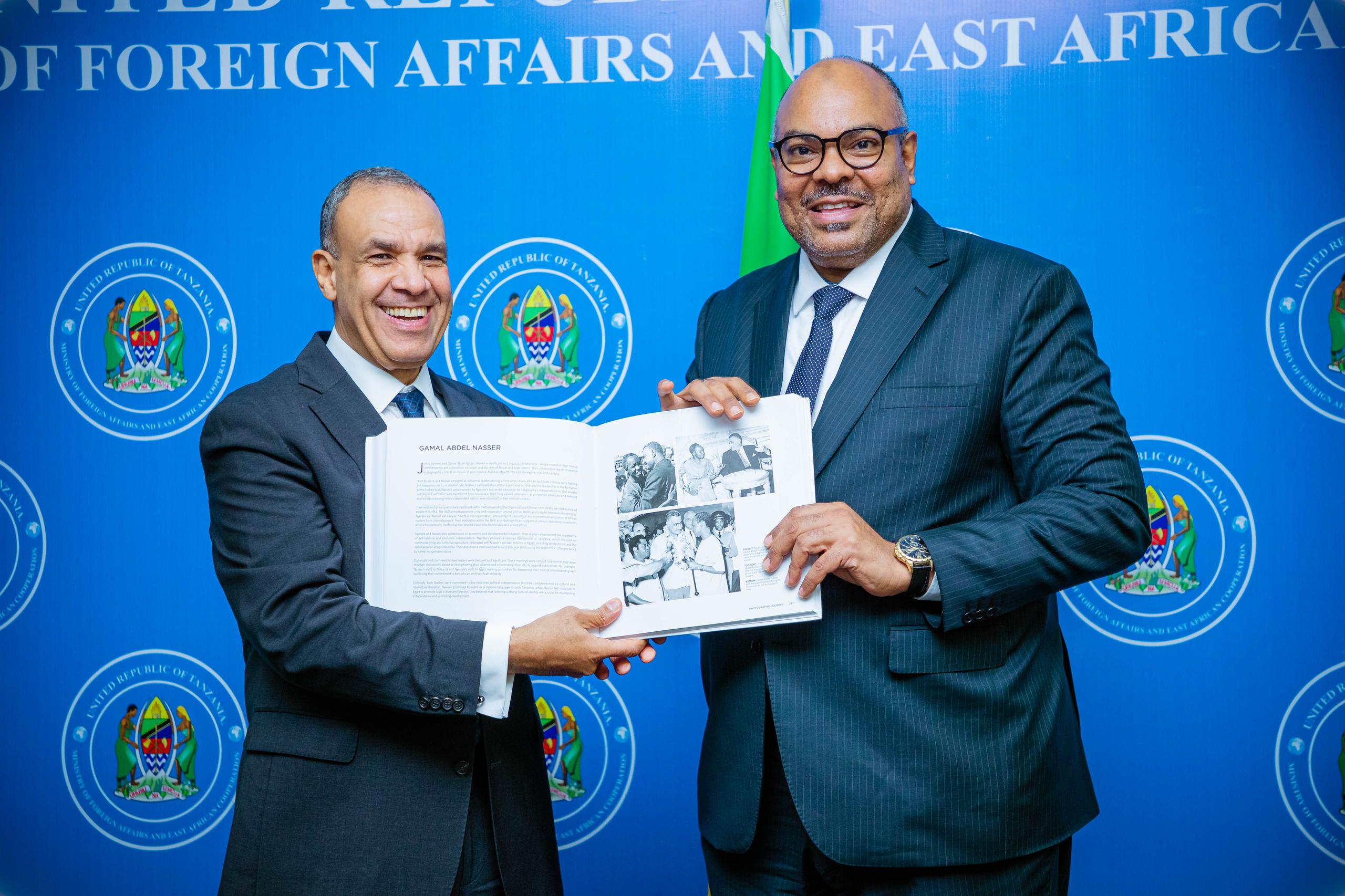Mwanza. The Tanzanian government is finalising the procurement of three state-of-the-art aquatic weed harvesters as part of an intensified campaign to combat the persistent proliferation of water hyacinth on Lake Victoria.
Water hyacinth (Eichhornia crassipes) an invasive species that has disrupted ferry transport, threatened aquatic life, and strained regional economies.
Mwanza Regional Commissioner, Said Mtanda, announced the development over the weekend, during an inspection of manual weed clearance operations.
He noted that the harvesters are expected to complement existing efforts and significantly reduce operational constraints caused by the weed.
“We are currently spending Sh2 million daily to clear the hyacinth mats which have made it difficult for ferries to navigate… This challenge will soon be addressed through mechanised solutions,” he said.
Lake Victoria—Africa’s largest freshwater lake and a key economic lifeline for Tanzania, Kenya and Uganda—is experiencing mounting environmental pressures.
The spread of water hyacinth, driven by nutrient-rich effluents from human settlements and industrial discharge, is both a symptom and a catalyst of the basin’s deteriorating ecological health.
According to Permanent Secretary in the Vice President’s Office [Union and Environment], Mr Cyprian Luhemeja, manual efforts to clear the weed have yielded results, especially against younger hyacinth blooms.
However, entrenched infestations now necessitate more advanced interventions.
“The older hyacinth mats require modern machinery for effective removal. That is why we are procuring the recommended harvesters as guided by the Prime Minister,” he said, citing the broader environmental threats posed by the invasive species.
The water hyacinth is a fast-growing weed that doubles its mass every 5 to 15 days under ideal conditions, leading to oxygen depletion in the water and endangering fish stocks.
Damning report
Yet the crisis runs deeper than mobility disruptions. The World Bank-backed Reviving Lake Victoria: A Regional Approach to Inclusive Sanitation, 2024 report underlines a more insidious issue: the deterioration of water quality in Lake Victoria over the past four decades has been driven largely by the unchecked discharge of human and industrial waste, compounded by unsustainable land use and climate change.
The explosive growth of the hyacinth is both a symptom and a catalyst of this decline.
Water hyacinth thrives in nutrient-rich waters—a condition increasingly prevalent in the lake due to the lack of effective sanitation.
The World Bank report estimates that 33 million people in the Lake Victoria Basin (LVB) lack access to improved sanitation, leading to direct or indirect waste discharge into the lake.
With Mwanza among the basin’s largest urban settlements, the strain on the lake is pronounced.
Rapid urbanisation without commensurate infrastructure has rendered Mwanza and similar towns not only vulnerable to environmental degradation but also contributors to it.
In Mwanza alone, over 600 tonnes of the weed have already been removed this year, underscoring the scale of the challenge
Beyond Tanzania’s immediate efforts, the broader regional response has taken a structured, collaborative turn.
In January 2025, the Lake Victoria Basin Commission (LVBC)—a specialised institution of the East African Community—committed itself to a transformative programme aimed at restoring the basin’s ecosystem and enhancing the sustainability of its natural resources.
Recognising the lake’s critical role in the livelihoods of over 47 million people across the basin, the LVBC has launched a multi-phase, multi-sectoral engagement with the World Bank focusing on environmental restoration, pollution control, sustainable fisheries, and resilient urban infrastructure.
“We remain focused in discharging our mandate so that millions of people within the Lake Victoria Basin can benefit,” said LVBC executive secretary, Dr Masinde Bwire.
This year also saw intensified political support from EAC Partner States.
At the 11th Joint Regional Policy Steering Committee (JRPSC) meeting held in Kisumu, principal secretaries from Kenya, Uganda, Rwanda, Burundi, South Sudan and Tanzania reaffirmed their commitment to conservation efforts in the Lake Victoria Basin.
Kenyan officials warned of the existential threat posed by escalating pollution, calling for increased national funding amid dwindling external support.
The meeting highlighted key programmes such as the Lake Victoria Basin Integrated Water Resource Management (LVB-IWRM), the Multinational Lake Victoria Maritime Communication and Transport (MLVMCT) project, and the Nile Cooperation for Climate Change Resilience (NCCR), funded by the World Bank.
The LVB-IWRM, in particular, has contributed to improved sanitation and waste management in Mwanza, Kampala, Kigali and Kisumu—urban centres often blamed for releasing untreated sewage into the lake
In tandem, the LVBC has rolled out reforestation and watershed protection initiatives around the basin.
These efforts aim to stabilise water flow, reduce soil erosion, and revive the lake’s capacity to sustain both human and aquatic life.
At the same time, the commission is promoting eco-tourism and sustainable agriculture as alternative income-generating activities to reduce pressure on the lake’s resources.
The water hyacinth crisis serves as a stark reminder of the basin’s fragility.
Analysts warn that unless long-term investments are made in waste treatment and urban planning, mechanised weed removal will only serve as a temporary fix.
Also experts insist that lasting success hinges on sustained cross-border coordination, consistent policy enforcement, and community-level engagement.
Lake Victoria’s ecological future depends not only on clearing what floats on its surface but also on what seeps invisibly beneath it—from untreated sewage and chemical effluents to policy inertia.







